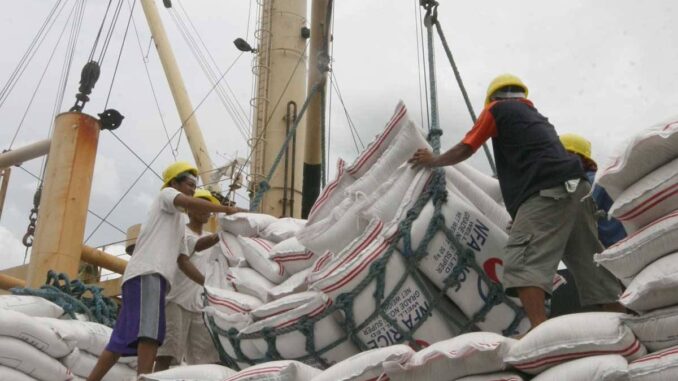
THE country’s rice imports from January to August totaled 2.8 million metric tons (MT), 19 percent higher than the 2.3 million MT from the same period in 2023, according to data from the Department of Agriculture (DA).
In its latest report, the DA’s Bureau of Plant Industry (BPI) said in August alone, rice from abroad accelerated to 296,350.9 MT compared to 167,403.8 MT in July. However, it is still lower than the average monthly arrival of 400,000 MT logged in the earlier months.
On a bright note, Agriculture Assistant Secretary and spokesman Arnel de Mesa on Thursday said rice prices have been decreasing: “We are seeing prices at around P45 per kilo for both regular and well-milled rice, and some areas… as low as P42.”
As for production targets, the agency aims to produce 20.4 million MT of palay (unmilled rice) or 13.7 million MT of rice this year.
Agriculture Secretary Francisco Tiu Laurel Jr. said the effects of Executive Order 62 to further reduce rice tariffs will be felt by October.
Last June, the National Economic and Development Authority slashed taxes on imported rice to 15 percent from the previous 35 percent to “drive down” retail prices in the country.
The latest import volume from the BPI corresponds to 3,830 sanitary and phytosanitary import clearances issued by the bureau to accredited traders.
The report also showed Vietnam remained the Philippines’ top source of the staple during the period, shipping over 2.17 million MT or around 77 percent of total imports.
Next was Thailand with 371,390 MT; followed by Pakistan, 156,121 MT; and Myanmar, 66,910 MT.
The rest came from India, China, Japan, Cambodia, Italy and Spain.
In 2023, inbound shipments of rice totaled 3.6 million MT, down 5.9 percent from the record-high 3.82 million MT in 2022. For 2024, the DA projects rice imports to not exceed last year’s volume.
In terms of rice inflation, the department said that they are hopeful that it will continue to decrease to a single digit in the coming months. Report from the Philippine Statistics Authority showed that rice inflation dropped from 20.9 percent in July to 14.7 percent in August.
“We’re very happy to note that rice inflation has decreased significantly … That’s a very significant reduction, and we’re expecting that it will fall further in the coming months,” de Mesa said.
Food inflation has also declined from 6.7 percent to 4.2 percent. As a result, the overall inflation rate decreased to 3.0 percent last month.
When asked regarding the impact of weather disturbances on inflation, de Mesa said that current disruptions have not significantly affected large areas and that annual losses are still within manageable limits.


Be the first to comment